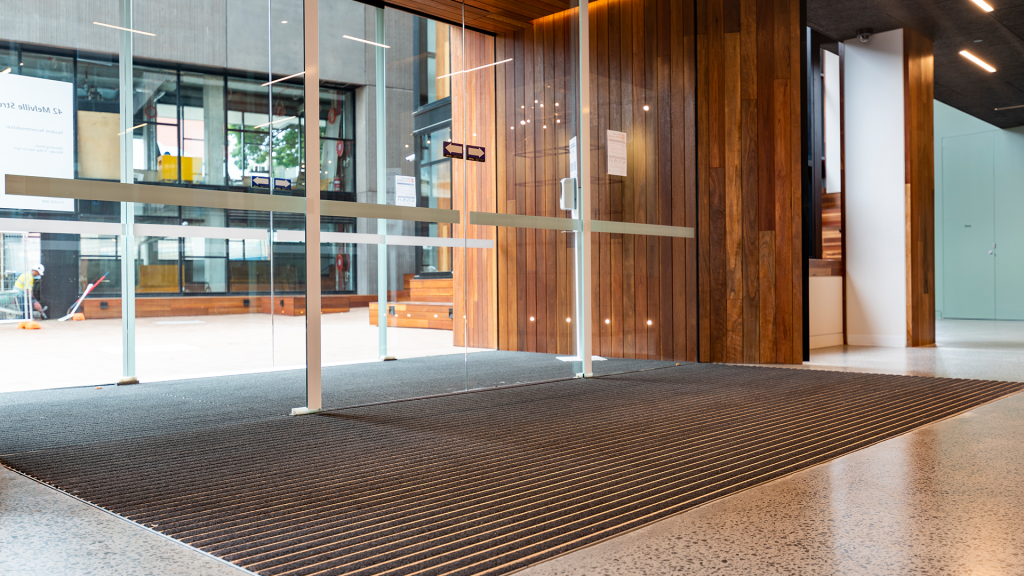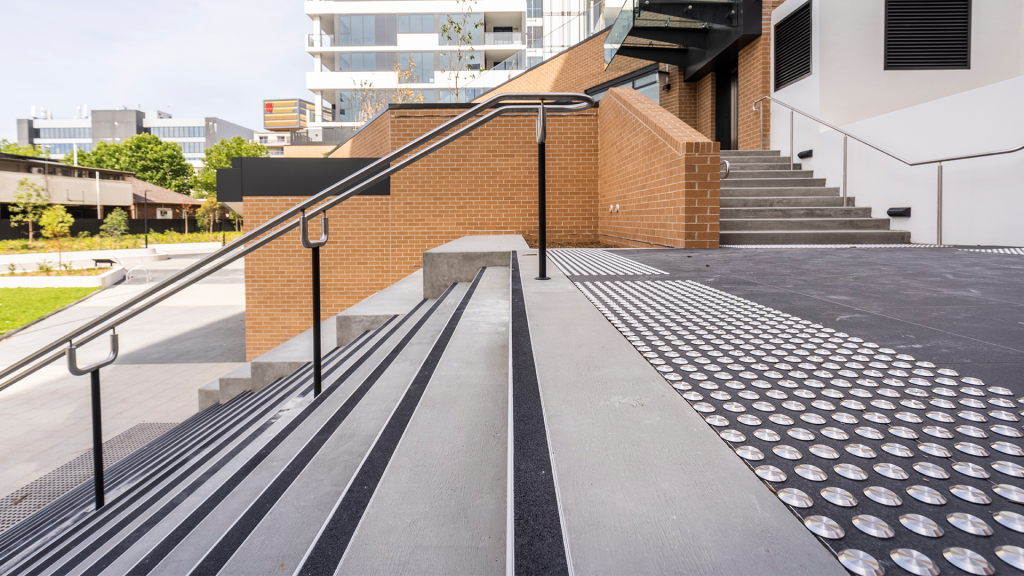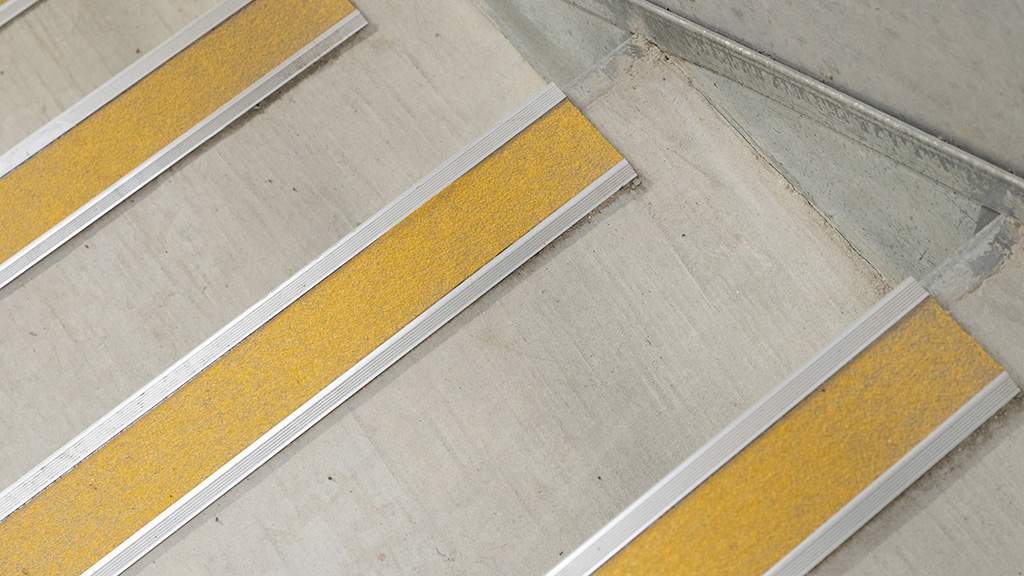Slips, trips and falls don’t just happen – they’re preventable. Wet areas in workplaces, commercial facilities and even public spaces pose a significant safety risk. That’s where non-slip mats and wet area safety mats come in. But what exactly are they? Are they mandatory? And how do you choose the right one?
In this article, we’ll break it down into three key parts to help you make an informed decision.
PART 1: Understanding Wet Area Safety Mats
What are wet area safety mats?
Wet area safety mats – sometimes referred to as anti-slip or non-slip mats – are specialised floor coverings designed to improve traction and reduce water build-up in wet or slippery areas. They’re usually made from rubber, PVC or specialised antimicrobial materials that resist water, oils and chemicals.
What types are available?
Sterling Supplies offers a range of wet area mats suited to different industries, including:
- Comfort Flow Mats – ideal for kitchens and food service areas
- Sani-Tuff Mats – heavy-duty rubber for industrial settings
- Heronrib or Gripwalker Mats – great for change rooms and aquatic facilities
- Grease-Resistant Safety Mats – designed for food processing or commercial kitchens
Each type is designed for specific applications, balancing drainage, anti-fatigue properties, slip resistance and hygiene.
Where are wet area safety mats used?
You’ll commonly find them in:
- Commercial kitchens and bars
- Public showers and change rooms
- Industrial and manufacturing washdown zones
- Food processing and prep areas
- Aquatic centres and spas
Wherever there’s standing water, slippery surfaces or oily residue – non-slip safety matting should be a consideration.
PART 2: Compliance and Consequences
Are wet area safety mats required by Australian law?
While there’s no single standard for mats themselves, employers are legally required to provide a safe working environment under the Work Health and Safety Act 2011. This includes managing slip risks, especially in wet or high-risk areas.
Standards and guidelines relevant to safety matting include:
- AS/NZS 4663:2004 – for assessing slip resistance of wet floor surfaces
- AS/NZS 4586:2013 – for new pedestrian surface materials
- Safe Work Australia’s Code of Practice – Managing the risk of falls and slips
Failing to provide adequate wet area mats could leave you open to legal liability or workplace injury claims.
What's the cost of not using safety mats?
Beyond potential injury, slips and falls in wet areas can result in:
- Lost productivity due to downtime
- Worker’s compensation claims
- Increased insurance premiums
- Damage to your reputation
A simple investment in the right non-slip matting can save your business thousands.
Do I need wet area safety matting in my business?
If you operate in any environment where water, oil or moisture is present – yes. The right matting not only prevents injury but also keeps your workspace compliant, comfortable and hygienic.
PART 3: How Sterling Supplies Can Help
What industries does Sterling Supplies support?
We work across industries including:
- Food service and hospitality
- Health and aged care
- Manufacturing and warehouses
- Aquatic centres and recreational facilities
- Government and council-managed spaces
Do you offer recommendations and custom solutions?
Absolutely. Our team regularly helps customers select the best wet area mats for their site conditions, traffic flow, chemical exposure and hygiene needs. Whether it’s a non-slip kitchen mat or a durable industrial rubber mat – we’ve got the expertise.
Need to replace or upgrade?
We’ve helped hundreds of businesses reduce slip risks, improve comfort for standing workers, and meet workplace safety requirements with custom-fit matting solutions.
Ready to talk safety?
Visit our full range of wet area safety mats here:
Or get in touch for tailored advice that keeps your site safe, compliant and looking sharp.




